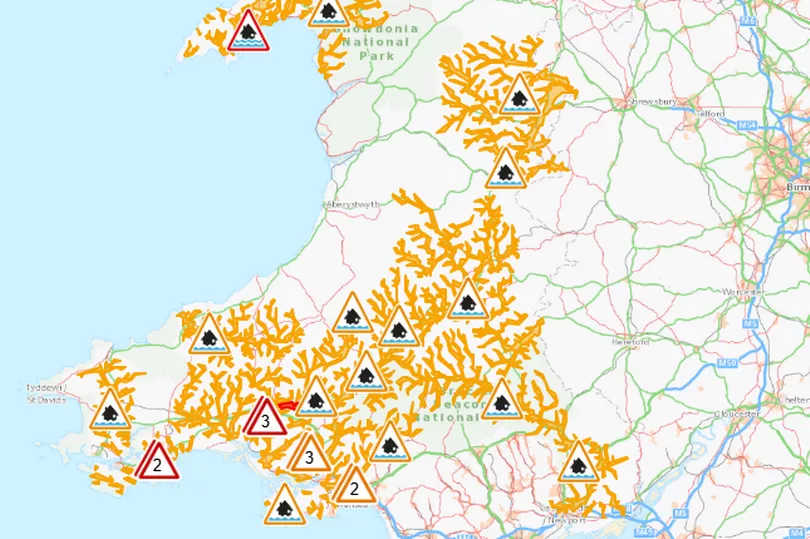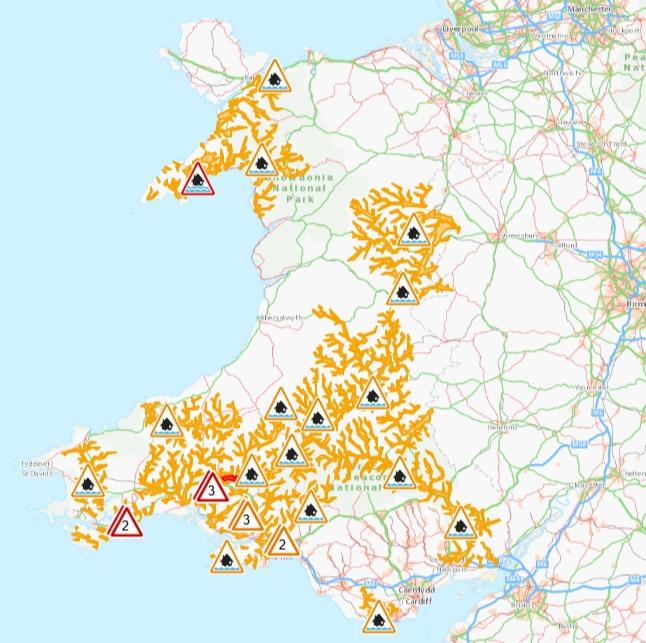News
Careful how you boast about readership figures, Herald Editor warned


Thomas Sinclair, Editor: Told by the ASA that The Pembrokeshire Herald must be clearer about sources of readership data
THE PEMBROKESHIRE HERALD must be clearer about its sources of data in advertisements comparing readership levels with other newspapers, the Advertising Standards Authority has said.
In a ruling released today (Feb 1), following a complaint by the Western Telegraph’s management, the ASA said that the public could have been mislead by The Pembrokeshire Herald’s claim in July last year that the paper had more combined readers in print and online than its nearest rival.
Whilst the claim was true, the ASA were unhappy that the paper’s Google Analytics data was not subject to external audit, unlike the data for the Western Telegraph, which is.
The ASA ruling reads: “We noted that the Pembrokeshire Herald had supplied information from a variety of different, third-party sources to compare respectively the figures for print readers and website visitors for their own publication and the Western Telegraph. However, while the figures provided for print readers of the Western Telegraph had been audited by the Audit Bureau of Circulation, and the figures for visitors to the Western Telegraph website had been prepared to the industry agreed standards defined by the Joint Industry Committee for Web Standards in the UK (JICWEBS), the data relating to their own publication and website had not been similarly audited or verified.”
The Pembrokeshire Herald is now running similar adverts, with an amendment making it clear to readers that their data is sourced by Google Analytics.
Editor of The Pembrokeshire Herald, Thomas Sinclair, said: “We are proud that we are the number one source for news in Pembrokeshire. We can understand why the Western Telegraph have been attempting to block us advertising this. In my view, this whole farrago has been an attempt by a large multinational to bully a small publisher. Everyone trusts Google Analytics as the standard benchmark for web visits worldwide.
“It is my view, regretfully, that the ASA has assisted Newsquest in its attempt to bully The Pembrokeshire Herald. ABC and JICWEBS, in my view, operate as a cartel.
“I have noted that many local news publishers across Wales do not subscribe to ABC for audit (source IWA Report on Media in Wales, 2015). I note that Tindle Group do not subscribe to its services in Wales according to the same IWA report. ABC is clearly not accepted as an ‘accepted industry standard’ in Wales, or rather it is only accepted as such by a small number of non-local media publishers, prepared to pay its fees. In essence ABC acts as a de facto cartel and the ASA is endorsing a cartel position.
“ASA previously accepted our readership figures for The Pembrokeshire Herald were accurate based on the same data we relied upon to provide the figures underlying this advert. Either the ASA is behaving inconsistently or the ASA is effectively acting as an agent to compel publications to subscribe to ABC – either subscribe to ABC or do not produce circulation or readership figures seems to be the essence of the ruling.
“Ignoring empirical evidence from Google Analytics places self-audited, tick box figures above factual accuracy. The effect of that is that publishers who subscribe to JICWEBS are able to make frankly nonsensical and inconsistent claims about their online reach. We have demonstrated this to the ASA previously and I cannot conceive of another field in which self-certification is preferred over real time data which cannot be altered to suit an agenda.
“The reliance on JICWEBS is, with respect, flawed and anti-competitive. It favours those prepared to pay for a service that can be sourced elsewhere, especially if it is used as a club by the ASA to beat publishers with which to beat non-subscribing publishers over the head.
“Relying on a limited set of metrics for data is plainly both anti-competitive and encouraging a cartel position to continue.”
News
Flood warnings issued across Wales as heavy rain raises river levels

FLOOD warnings and alerts have been issued across large parts of Wales as persistent heavy rain causes river levels to rise, with parts of the country facing an increased risk of flooding on Thursday (Dec 18).
Natural Resources Wales (NRW) has confirmed that four flood warnings are currently in place, meaning immediate action is required, while a further 16 flood alerts have been issued where flooding is possible.
A yellow weather warning for rain has been issued by the Met Office, covering much of Wales from 10:00am on Thursday until 7:00pm, with disruption expected in some areas.
NRW said the warnings follow prolonged wet weather, with further heavy rainfall forecast to move across the country during the day.
The Met Office said: “An area of heavy rain will move northeast across the warning area during Thursday morning and afternoon before clearing to the east through the evening.
“Given recent very wet weather, there is potential for some disruption to travel and possible flooding.
“Much of the warning area will see 15–25mm of rain but some places could see 40–50mm, with the highest totals falling over high ground of south Wales.”
Forecasters have also warned that strong winds could worsen conditions, particularly along the coast.
“There is a chance of 60–70mph gusts along the exposed south coast, and perhaps 40–50mph some way inland,” the Met Office added.

Flood warnings in force
NRW has confirmed flood warnings are currently active at the following locations:
- River Towy at Carmarthen Quay, Carmarthen
- River Ritec at Tenby
- River Towy affecting isolated properties between Llandeilo and Abergwili
- River Rhyd Hir at Riverside Terrace, Pwllheli
Residents in these areas are being urged to take immediate action to protect property and personal safety.
Flood alerts issued
In addition, flood alerts — meaning flooding is possible — have been issued for the Lower Severn catchment in Powys, along with other areas shown on NRW’s live flood monitoring maps.
NRW is advising people to remain vigilant, avoid flooded roads and footpaths, and keep up to date with the latest forecasts and warnings.
The Herald understands that river levels will continue to be closely monitored throughout the day as rainfall moves through Wales.
Members of the public can check the latest flood warnings and alerts on the Natural Resources Wales website or by signing up for flood alerts direct to their phone.

Flood alerts and warnings across Wales on Thursday (Pic: NRW).
Crime
Jury discharged after failing to reach verdict in historic abuse trial

CPS have a week do decide if they wish to pursue a re-trial, judge confirms
THE JURY has been discharged in the trial of a Milford Haven man accused of historic child sex offences after telling the court it was unable to reach a verdict, even by majority.
Thomas Kirk, aged 50, of Meyler Crescent, Milford Haven, is charged with the oral rape and sexual assault of a child, with the offences alleged to have taken place in Pembrokeshire between 2007 and 2009, when the complainant was aged between thirteen and fifteen. He denies the charges.
On Thursday (Dec 18), the jury returned to Swansea Crown Court and was asked whether it had reached a verdict on either count upon which at least ten jurors were agreed.
The foreman replied: “No.”
Judge Paul Thomas KC then asked whether there was any realistic likelihood that further deliberations would lead to a verdict being reached.
The foreman replied: “No, your honour.”
Judge Thomas KC said that in those circumstances he would discharge the jury and give the prosecution seven days to decide whether it would seek a retrial.
Addressing the jurors, the judge said they should not think they had failed or let anyone down.
“These things happen,” he said. “It’s one of the strengths of the jury system that people hold different views.”
He thanked the jury for their service and wished them a Merry Christmas and Happy New Year.
The court heard that the prosecution will now consider its position, with a further hearing expected next week to determine whether a retrial will take place.
Crime
Police appeal to locate 69-year-old man wanted in harassment investigation

DYFED-POWYS POLICE are appealing for information to help locate a man from the Ammanford area who is wanted in connection with a harassment offence.
Alan Tait, aged 69, is being sought by officers as part of an ongoing investigation.
Police believe he may currently be in the Derbyshire area, but say he also has links to South Wales and Gwent.
Anyone with information that could assist officers in locating him is urged to contact Dyfed-Powys Police.
-

 Crime22 hours ago
Crime22 hours agoMilford Haven man jailed after drunken attack on partner and police officers
-

 News4 days ago
News4 days agoDyfed-Powys Police launch major investigation after triple fatal crash
-

 Crime3 days ago
Crime3 days agoMan sent to Crown Court over historic indecent assault allegations
-

 Crime2 days ago
Crime2 days agoMan charged with months of coercive control and assaults
-

 Crime20 hours ago
Crime20 hours agoTeenager charged following rape allegation at Saundersfoot nightclub
-

 Crime5 days ago
Crime5 days agoMan spared jail after baseball bat incident in Milford Haven
-

 Crime3 days ago
Crime3 days agoMilford Haven man admits multiple offences after A477 incident
-

 Crime2 days ago
Crime2 days agoWoman ‘terrified in own home’ after ex breaches court order





















